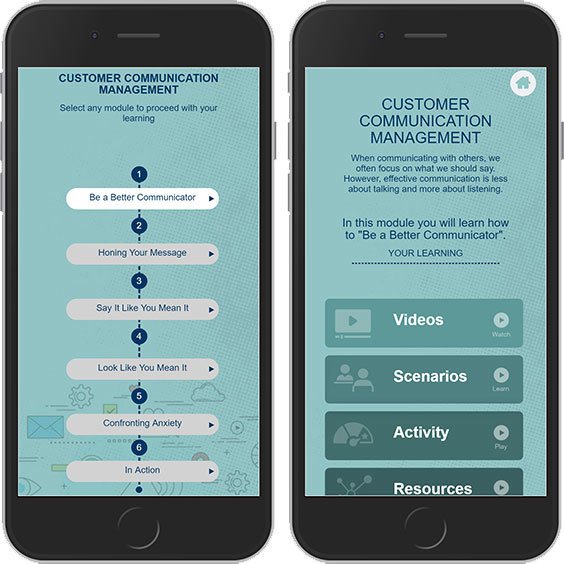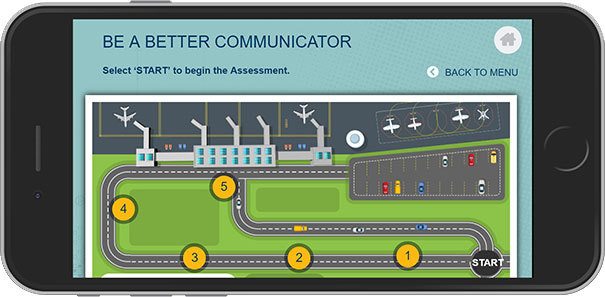With an increase in use of gamification and microlearning, you may be looking for using their combination for corporate training. In this article, see how you can use gamified microlearning activities to boost the impact of your corporate training.
Gamified Microlearning Activities: How To Boost The Impact Of Your Corporate Training.
In the last few years, you would have seen two significant trends in online corporate training:
- A Wider Acceptance Of Gamification For Serious LearningToday, the use of gamification cuts across most of the corporate training needs ranging from induction and onboarding, soft skills training, professional skills training, application simulations training to compliance training.
- An Extensive Adoption Of MicrolearningFrom its early avatar as performance support or just-in-time learning aids, today microlearning based training is being used across the majority of corporate training needs. It is being used to offer formal training, and it continues to be the preferred choice for job aids/learning aids. It has also made inroads into supporting ILT/VILT.
With the maturing of these techniques, a logical extension is to leverage on the combination of both approaches.
In this article, I outline one of the ways through which you can use the combination. I outline how you can use gamified microlearning activities to boost the impact of your corporate training.
Before moving on to the specifics of the combination (gamified microlearning activities), let me outline the strengths of microlearning and gamification techniques for online training.
What Is Microlearning?
Microlearning is short, focused, bite-sized training that is typically 2-7 minutes long. It is not eLearning lite. Instead, it is designed to be a nugget that meets a specific learning outcome.
The microlearning nuggets can be designed to be consumed as a stand-alone nugget (as a job aid/learning aid designed to help learners at the moment of their need), or as part of a learning path featuring several such nuggets (typically for formal training). The microlearning nuggets can also be used to support ILT/VILT programs.
Microlearning is typically offered in the mobile learning format (although, it will support other devices too), enabling learners to consume the learning on the device of their choice and on the go.
It features high-impact, engaging formats notably, animated videos, interactive videos, infographics, interactive infographics, and so on.
What Is The Relevance Of Microlearning Today?
The primary trigger for the adoption of microlearning was the need to meet the challenge of diminishing attention spans. But, this is not the only factor in its favor.
As we see a change in the pattern of how learners want to learn, microlearning based training provides a great way to match the learners’ preferences to learn.
- It resonates with learners on account of the fact that it can be consumed on the go, and it will help them achieve a specific learning goal.
- In a world where we need to multi-task all the time, microlearning based training can be consumed in the midst of other commitments.
What Is Gamification And The Value It Brings In For Learners And Businesses?
Gamification is the use of principles and key elements of gaming to deliver the required learning objectives.
Unlike traditional eLearning, the operative words in this approach are “fun as you learn.” Driven by a narrative, the learning path is interspersed with learning assets, challenges, levels, instant feedback, scores, badges, and leaderboards.
A highly engaging approach, gamification for serious learning helps L&D teams achieve learning outcomes through a more engaging journey. An effective gamification strategy provides higher completion rates as well a better recall and retention. It can be used with equal success to apply the learning at work as well as help learners upskill.
What Are The Benefits Of Gamified Microlearning Activities?
Gamified microlearning activities are one of the approaches that can help you leverage on the combined value of gamification and microlearning.
They offer the following benefits:
- Gamified microlearning activities are aligned to the 70/20/10 model of learning. You can use microlearning gamified activities for formal training, for performance support (just-in-time learning aids), and to facilitate proficiency gain. The nuggets can be designed to offer highly experientialtraining. You can also leverage on social or collaborative learning.
- Gamified microlearning activities offer short, focused tasks leading to learning, problem-solving, application of learning, practice, proficiency gain, and so on.
- Gamified microlearning activities offer high engagement as they provide a highly relevant and immersive learning experience. As a result, you will see:
a. Better completion rates
b. High retention and recall
How Can You Use Gamified Microlearning Activities To Boost The Impact Of Your Corporate Training?
I recommend a simple 3-step process that you can use to leverage on the combined power of microlearning and gamification.
Step 1: Identify The Microlearning Nuggets That Can Be Designed To Deliver Diverse Learning Outcomes
You can use them to offer the following (individually or in a path where you can combine one or more):
- Theory
- Practice
- Application
- Testing
- Collaborative learning
Step 2: Depending On The Nature Of The Learning Outcome, Design The Nuggets In Different Formats
For instance, you can have different categories based on what you want to achieve. These could include nuggets that learners could use to:
- Watch and learn
- Practice
- Test their knowledge
- Explore (curated to enhance learning or look at related information)
Step 3: Combine Gamification And Microlearning Techniques
The combination of gamification and microlearning techniques can be done in multiple ways.
I am outlining 4 examples that show how you can use gamified microlearning activities.
1. Offer A Personalized And Gamified Learning Path
Microlearning nuggets can be woven into a highly relevant and personalized learning path. You can either gamify the learning path or have individual nuggets that feature gamification.
This example of gamified microlearning activities features:
- A personalized learning path.
- All microlearning topics have points associated with each of them.
- A dashboard is accessible to the learners to view their progress through the topics and their performance in achieving points, badges, and expertise levels.


2. Gamified Incentives To Enhance Performance
The gamified learning journey can offer a personalized performance indicator that can aid learners to focus on further improvement. You can nudge the learners to achieve this through gamification elements (points, badges, and recognition).
This example of gamified microlearning activities features:
- An emotion meter and stars achieved at various stages of the gamified activity.
- Through the performance indicator, the required cues are provided to learners on the improvement areas so that they can gain more points and achieve badges.


3. Real-Time Feedback And Gamified Assets As Recommendations (Based On Learner Behavior) Can Help Learners Improve Their Performance
In this endeavor:
- The remediation or reinforcement nuggets can be offered in a microlearning format that can be gamified.
- The challenges can be offered as microlearning nuggets that have gamified scenarios and assessments.
- The practice sessions to improve the skills can be gamified microlearning nuggets (can be offered in a stand-alone mode or connected through a gamified learning path).
This example of gamified microlearning activities features:
- A microlearning based learning path consisting of various types of nuggets, including gamified practice activities and scenarios.
- It also offers recommended learning nuggets based on learner performance/behavior.



4. Curated Assets With Gamified Incentives
Besides offering the microlearning nuggets for formal training as well as job aids or learning aids, you can also offer curated assets. To encourage learners to go through them, you can use gamification elements such as points and badges.
This example of gamified microlearning activities features:
- Curated assets that provide more information and deeper knowledge on the topics covered in the main learning path.
- These too have points allocated to them for completion and adds to the overall points tally for the learner.

As you would have noted, the combination of microlearning and gamification in the format of gamified microlearning activities can be used in many ways to boost the impact of your corporate training.
In this article, I have touched upon a few facets of how you can leverage on this combination. In this endeavor, you are limited only by your imagination. If you have any queries or need any specific support, do contact me at apandey@eidesign.net.
































